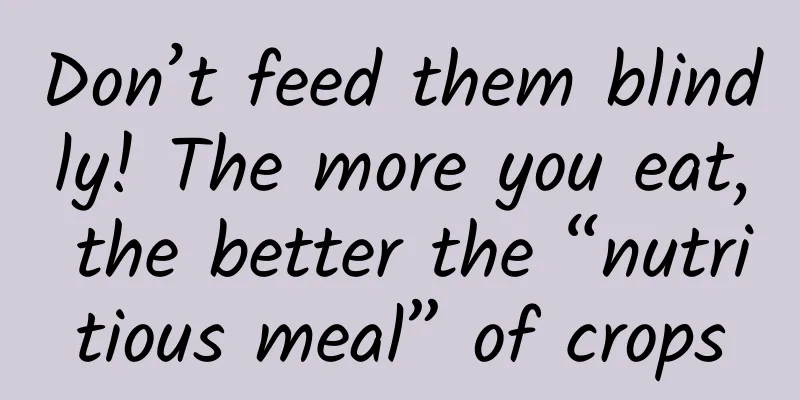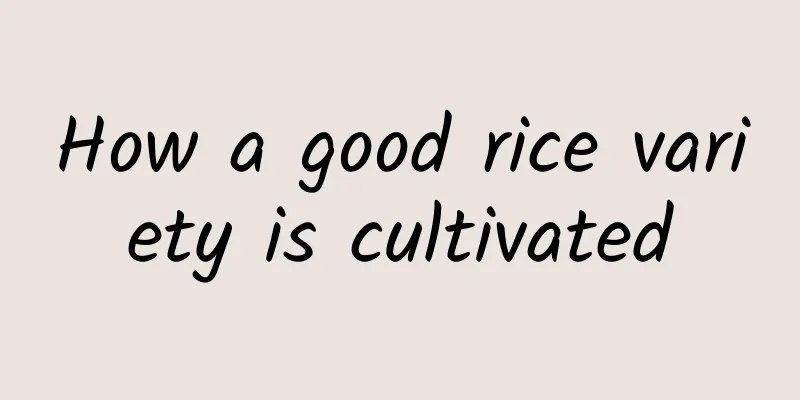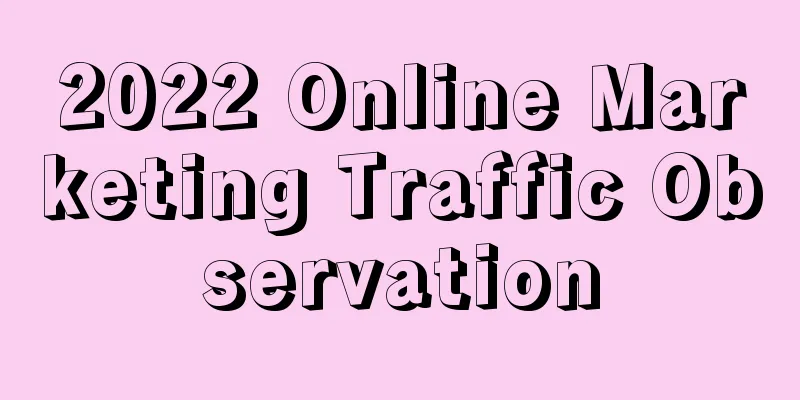Don’t feed them blindly! The more you eat, the better the “nutritious meal” of crops

|
As the saying goes, "Man is iron, rice is steel, and if you don't eat, you will be hungry." We need to eat every day to get the energy and nutrition our bodies need. So, do crops need to "eat"? Of course, they also need to "eat", because crops continue to grow and develop, and they also need various nutrients. However, the nutrients contained in the soil usually cannot meet the growth needs of crops. So how can crops get enough nutrients? This requires providing them with "nutritious meals". Image source: Pixabay Fertilizer is a "nutritional meal" specially made for crops. We need to supplement trace elements such as calcium, iron, zinc, and selenium, while crops mainly need to supplement nitrogen, phosphorus, potassium and other elements. Urea (containing nitrogen), superphosphate and potassium chloride are all "nutritional meals" commonly eaten by crops. When planting crops, the rational use of organic fertilizers, compound fertilizers and other fertilizers can increase the yield of crops. "More grain and less grain depends on fertilizer" and "Full baskets with fertilizer in spring and full warehouses with grain in autumn" and other agricultural proverbs vividly illustrate the important role of fertilizers. In order to make crops absorb more nutrients and grow faster and better, farmers want to give them more "nutritious meals". So, is it better to give crops more fertilizer? No! The answer is no. Just like we will have food stagnation if we eat too much, when the amount of fertilizer is too much and exceeds the absorption capacity of crops, it is not only not conducive to the growth of crops, but also harmful to them. For example, excessive use of nitrogen fertilizer will cause crops to grow too tall (stems and leaves grow too vigorously), lodging (plants tilt or fall to the ground), and reduce resistance to diseases and insect pests; excessive use of phosphorus fertilizer will make the respiration of crops too vigorous, causing the energy stored in the crops to be consumed quickly; excessive use of potassium fertilizer will cause crops to suffer from diseases such as leafy heart rot. What's more troublesome is that excessive fertilization will also damage arable land and cause environmental pollution. At present, the utilization rate of chemical fertilizers in my country is only about 35%, and the excess chemical fertilizers will be lost through infiltration, loss, volatilization, etc. The chemical fertilizers that penetrate into the arable land will cause the soil to acidify and harden. In the long run, fertile fields will become wasteland. Moreover, the amount of fertilizer that the soil can retain is limited. The lost chemical fertilizers will flow into rivers, lakes and seas with rainwater, causing water pollution. When there are too many nutrients in the water, some algae will "eat" crazily, grow wantonly, and cover the water surface like a blanket. Sunlight and oxygen will be blocked by this "blanket", causing poor growth or even death of underwater organisms. People and animals living in the surrounding area who drink water contaminated by chemical fertilizers for a long time will also be affected in their health, and even endanger their lives. Image source: Pixabay It seems that we should not feed crops too much "nutritious food". So, is there any way to make crops consume less fertilizer and produce more food? This is to praise the legumes that can get fertilizer by themselves! Many people may not know that some legumes have "tumors" on their roots. This is not because of illness, but a survival skill that legumes have evolved over a long period of time. When they are "not full", nodules will grow on their roots. This is a spherical or long rod-shaped structure similar to a tumor, where the "nitrogen-fixing elves" - rhizobia live. The low utilization rate of chemical fertilizers is because farmers do not apply fertilizers completely according to the needs of crops. Various crops have different needs for nutrients at different growth stages, and farmers will get better results if they apply fertilizers on demand. my country is vigorously promoting the development of smart agriculture. If we can conduct field monitoring in real time, know in time what kind of nutrients crops need to be supplemented and the required amount, and then feed them "nutritious meals" accurately, we can make the crops full and eat well without polluting the environment! Chinese scientists are working towards the goal of cracking the mystery of symbiotic nitrogen fixation and creating a miracle of nitrogen fixation in non-leguminous crops. Perhaps it won't be long before more crops that can combine with rhizobia will be born one after another! Source: Chongqing Industry-University-Research Cooperation Promotion Association Review expert: Xu Minglu, researcher at Chongqing Academy of Agricultural Sciences Statement: Except for original content and special notes, some pictures are from the Internet. They are not for commercial purposes and are only used as popular science materials. The copyright belongs to the original authors. If there is any infringement, please contact us to delete them. |
>>: Build a house on the moon! "Lunar soil bricks" are here
Recommend
Campus safety knowledge reminder for the start of the school season, please check~
Campus safety is of great importance These safety...
Introduction to Baidu information flow promotion white paper! (Attached with download)
As user behavior undergoes tremendous changes in ...
5 hidden details in WatchKit
There are only a few months left before the offic...
Why do short videos on Douyin get no views, and why does no one view the Douyin videos I post?
Many people have this question: why do the Tik To...
Summary of Swift basic grammar learning
1. Basics 1.1) Swift still uses // and /* */ for ...
24 tips for stranger social networking. What needs does stranger social networking solve?
Training Outline Opening remarks: Five modules to...
Can OLED TVs "replace" traditional LCD TVs?
Among the several new color TVs released recently...
How to achieve effective user retention? Share 6 tips!
When it comes to product growth, one thing that m...
Digging up the roots | Can blood transfusions “prolong life”? Still need to be viewed with caution
gossip Aging is a life process that everyone will...
Why do we often feel depressed in summer? 4 tips to get rid of "seasonal depression"
"Air conditioning network and watermelon, Ha...
Tik Tok Advertising Promotion | What is the billing method for Tik Tok advertising?
With the popularity of TikTok, many businesses wa...
"Sleeping on a hard bed is good for your waist"? You will understand after reading this
“Sleeping on a hard bed is good for your waist” M...
You can also make 500,000 yuan a month by relying on information flow!
Before we start today's topic, let's look...
Typography in Material Design
Roboto Roboto has been the default font for Andro...
How to use scientific “user segmentation” to break through the bottleneck of user growth?
When talking about the user growth of Internet pr...









